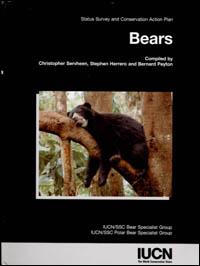Bears : status survey and conservation action plan

Publisher:
Organization(s):
- Chicago Zoological Society, US
- IUCN Species Survival Commission (SSC), Bear Specialist Group
- IUCN Species Survival Commission (SSC), Polar Bear Specialist Group
- National Fish and Wildlife Foundation, US
- Oman, Sir Peter Scott IUCN/SSC Action Plan Fund
- Taiwan, Council of Agriculture
- United Kingdom, Department of the Environment, Transport and the Regions
- WWF International
The eight species of bear live in more than 65 countries or autonomous regions in four continents, in a variety of habitats from tropical rainforests to arctic ice. Numerous human cultures around the world symbolically or physically try to incorporate the power of bears into their people. But all species have declined in numbers due to the impacts of human activities, including: habitat alteration and destruction; unregulated killing of bears for sport; sale of parts for medicinal products; and protection of crops or livestock. This plan sets out priority actions for bear conservation, including surveys of status and distribution; cooperative projects and cross-border management; research projects to develop basic knowledge of habitat requirements; and documentation of the impacts of illegal trade. As bears are umbrella species in most of the ecosystems they inhabit, conservation of bears and their habitats will preserve biodiversity in these areas and focus management efforts on preserving watershed resources that also sustain human populations
Monographic Series:
Keywords:
Scientific name:
Broad subject:
Call number:
Record updated: 2022/05/24
